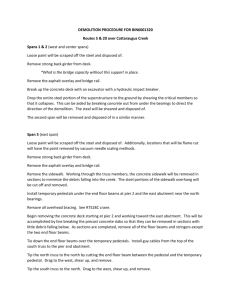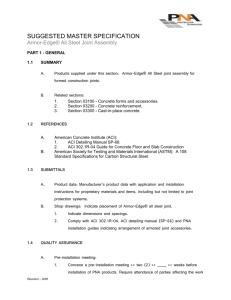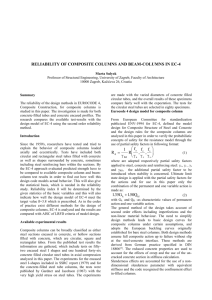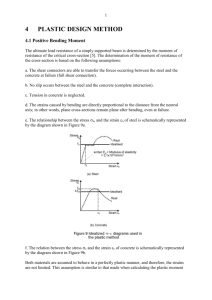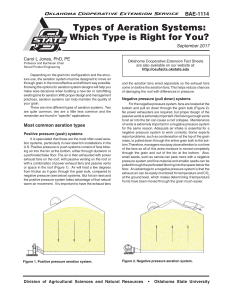Steel, Concrete or Temporary
advertisement
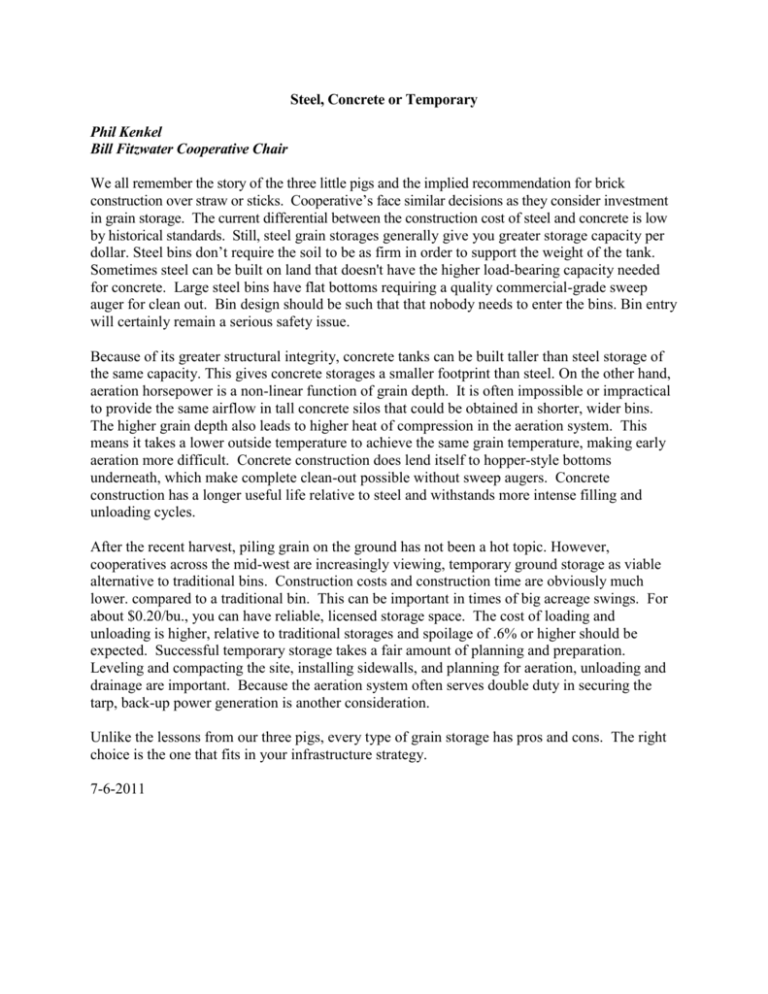
Steel, Concrete or Temporary Phil Kenkel Bill Fitzwater Cooperative Chair We all remember the story of the three little pigs and the implied recommendation for brick construction over straw or sticks. Cooperative’s face similar decisions as they consider investment in grain storage. The current differential between the construction cost of steel and concrete is low by historical standards. Still, steel grain storages generally give you greater storage capacity per dollar. Steel bins don’t require the soil to be as firm in order to support the weight of the tank. Sometimes steel can be built on land that doesn't have the higher load-bearing capacity needed for concrete. Large steel bins have flat bottoms requiring a quality commercial-grade sweep auger for clean out. Bin design should be such that that nobody needs to enter the bins. Bin entry will certainly remain a serious safety issue. Because of its greater structural integrity, concrete tanks can be built taller than steel storage of the same capacity. This gives concrete storages a smaller footprint than steel. On the other hand, aeration horsepower is a non-linear function of grain depth. It is often impossible or impractical to provide the same airflow in tall concrete silos that could be obtained in shorter, wider bins. The higher grain depth also leads to higher heat of compression in the aeration system. This means it takes a lower outside temperature to achieve the same grain temperature, making early aeration more difficult. Concrete construction does lend itself to hopper-style bottoms underneath, which make complete clean-out possible without sweep augers. Concrete construction has a longer useful life relative to steel and withstands more intense filling and unloading cycles. After the recent harvest, piling grain on the ground has not been a hot topic. However, cooperatives across the mid-west are increasingly viewing, temporary ground storage as viable alternative to traditional bins. Construction costs and construction time are obviously much lower. compared to a traditional bin. This can be important in times of big acreage swings. For about $0.20/bu., you can have reliable, licensed storage space. The cost of loading and unloading is higher, relative to traditional storages and spoilage of .6% or higher should be expected. Successful temporary storage takes a fair amount of planning and preparation. Leveling and compacting the site, installing sidewalls, and planning for aeration, unloading and drainage are important. Because the aeration system often serves double duty in securing the tarp, back-up power generation is another consideration. Unlike the lessons from our three pigs, every type of grain storage has pros and cons. The right choice is the one that fits in your infrastructure strategy. 7-6-2011

![Structural Applications [Opens in New Window]](http://s3.studylib.net/store/data/006687524_1-fbd3223409586820152883579cf5f0de-300x300.png)





